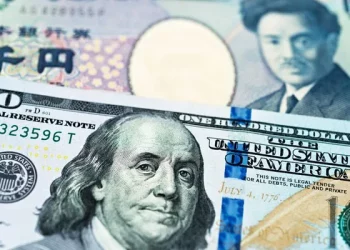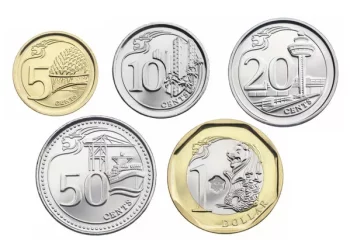The New Zealand one-dollar coin is a fascinating piece of currency that reflects not only the nation’s history and culture but also the intricacies of coin production. Introduced in 1991, this coin replaced the one-dollar note, offering a durable and convenient alternative. The composition, design, and production process of the NZ one-dollar coin are a testament to the careful planning required to create currency that is both practical and symbolic.
In this article, we will delve into the materials used to make the New Zealand one-dollar coin, its physical properties, its significance in the broader monetary system, and the reasons for the choices made in its production.
The Composition of the NZ One Dollar Coin
The NZ one-dollar coin is primarily made of aluminum-bronze, a durable and visually appealing alloy. This alloy is a combination of:
Aluminum (5-10%): This element adds lightness to the coin, making it easier to carry and handle compared to coins made entirely of heavier metals.
Copper (88-92%): Copper gives the coin its characteristic golden color and provides excellent resistance to wear and corrosion.
Nickel (2-6%): Nickel contributes to the coin’s durability and strength, ensuring it can withstand the rigors of daily use.
This blend creates a coin that is lightweight, durable, and resistant to tarnishing, making it ideal for circulation in a variety of conditions.
Physical Properties
The one-dollar coin is easily identifiable due to its size, color, and design. Here are its key physical properties:
Diameter: 23 millimeters
Thickness: 2.74 millimeters
Weight: 8 grams
Color: Golden, due to the high copper content in the alloy
These specifications ensure the coin is distinct from other denominations in New Zealand’s currency system, both in size and weight.
Why Aluminum-Bronze?
The choice of aluminum-bronze as the primary material for the one-dollar coin is rooted in practicality and economics. Let’s explore the key reasons for this decision:
1. Durability
Aluminum-bronze is an exceptionally durable alloy, making it ideal for coins that must endure frequent handling, vending machines, and transportation. The resistance to wear ensures a long lifespan, reducing the need for frequent replacements.
2. Anti-Corrosion Properties
New Zealand’s climate, with its significant coastal regions, necessitates coins that can resist corrosion from exposure to moisture and salt. The high copper content in aluminum-bronze provides this protection, ensuring the coin retains its appearance and functionality over time.
3. Security
The alloy’s unique properties make it difficult to counterfeit. The precise mix of metals, combined with modern minting techniques, ensures the one-dollar coin is secure and distinguishable from fake versions.
4. Economic Viability
Aluminum-bronze is relatively cost-effective compared to other coinage materials like pure silver or gold, allowing for mass production without excessive expense. Additionally, the durability of the alloy reduces long-term costs by minimizing the need for replacements.
The Design of the NZ One Dollar Coin
While the composition is crucial, the design of the coin also plays an essential role in its identity and functionality.
Obverse Side
The obverse side of the NZ one-dollar coin features the profile of Queen Elizabeth II, a nod to New Zealand’s status as a member of the Commonwealth. The inclusion of the monarch’s image not only connects New Zealand to its historical ties with the United Kingdom but also serves as a standard design element recognized worldwide.
Reverse Side
The reverse side depicts a kiwi bird, one of New Zealand’s most iconic symbols. The kiwi is a flightless bird endemic to the country and has become synonymous with New Zealand’s national identity. The artwork is intricate, capturing the unique features of the bird, and is accompanied by the denomination “ONE DOLLAR.”
This design highlights New Zealand’s cultural heritage and natural environment, making the coin not just a piece of currency but also a symbol of national pride.
The Transition from Paper to Coin
The transition from a one-dollar note to a coin in 1991 was a strategic decision driven by several factors:
Cost Savings Coins, while initially more expensive to produce, have a much longer lifespan than paper notes. A coin can last several decades, whereas a note may need replacement within a few years due to wear and tear.
Durability Coins are far more resistant to physical damage compared to notes. They can survive being dropped, submerged in water, or exposed to the elements without significant degradation.
Convenience Coins are often more convenient for vending machines, parking meters, and other automated systems. The introduction of the one-dollar coin simplified transactions in these contexts.
The Minting Process
The NZ one-dollar coin is minted using advanced techniques to ensure precision and quality. Here’s a brief overview of the process:
1. Material Preparation
The aluminum-bronze alloy is melted and cast into large sheets, which are then rolled to the desired thickness.
2. Blanking
Discs, known as blanks, are punched out of the metal sheets. These blanks are the precursors to the final coins.
3. Annealing
The blanks are heated and cooled in a controlled process to make them malleable for striking.
4. Striking
Each blank is placed into a coining press, where the designs for the obverse and reverse sides are struck onto the surface under high pressure.
5. Quality Control
The finished coins undergo rigorous inspection to ensure they meet the required standards in terms of size, weight, and design clarity.
The Role of the NZ One Dollar Coin in Modern Currency
The one-dollar coin plays a critical role in New Zealand’s monetary system. It serves as a bridge between smaller denominations and higher-value notes, facilitating transactions in a range of contexts. The coin is widely used in everyday purchases, vending machines, and public transport systems.
Despite the growing use of digital payments, coins like the NZ one-dollar remain relevant due to their convenience, durability, and cultural significance.
Environmental Considerations
Sustainability is an increasingly important consideration in currency production. The use of aluminum-bronze aligns with this focus:
Recyclability The alloy can be melted down and reused, making it an environmentally friendly choice.
Reduced Waste The durability of the one-dollar coin minimizes the waste associated with replacing worn-out currency.
Energy Efficiency Advances in minting technology have reduced the energy required to produce coins, further enhancing their environmental profile.
Conclusion
The New Zealand one-dollar coin is more than just a medium of exchange; it is a reflection of the country’s history, culture, and economic priorities. Made from durable aluminum-bronze, the coin is designed to withstand the test of time while celebrating national symbols like the kiwi bird. Its introduction marked a shift towards a more efficient and practical currency system, and its continued use underscores its value in the modern economy.
By understanding the composition, design, and production of the NZ one-dollar coin, we gain insight into the careful planning and innovation that underpin the creation of currency. As both a functional tool and a cultural artifact, the NZ one-dollar coin is a small but significant part of New Zealand’s identity.
Related Topics:



























